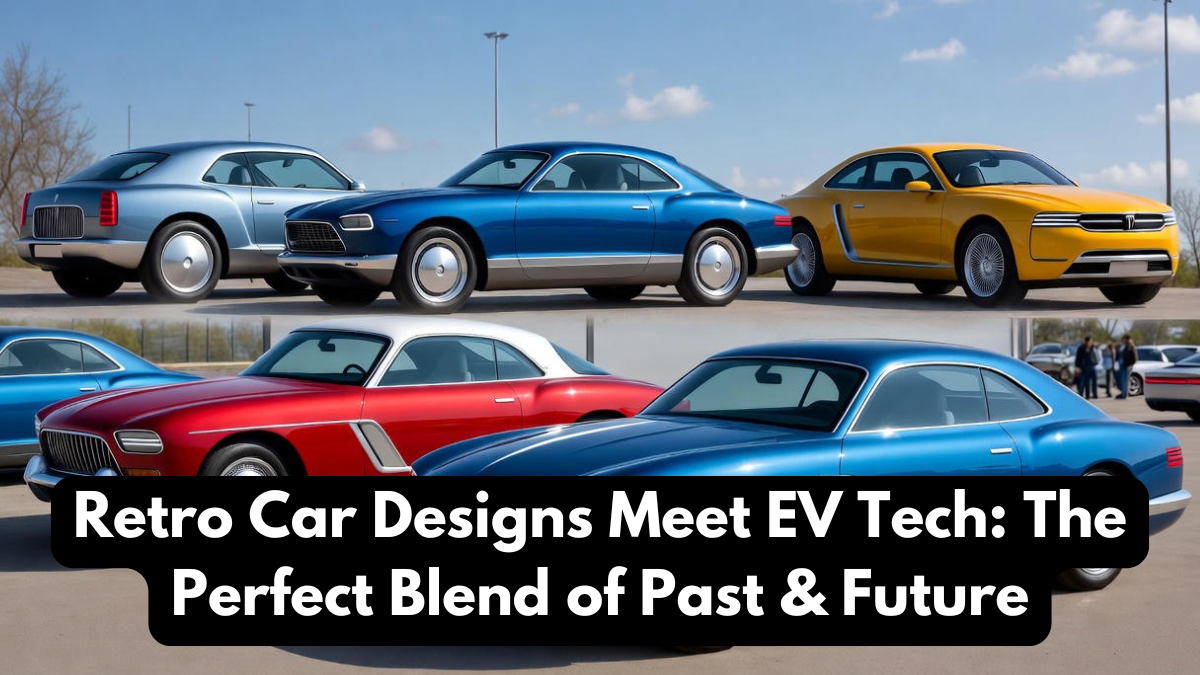The automotive world is witnessing a fascinating revival — the rise of retro electric cars. These vehicles bring together the best of both worlds: the charm of classic car designs and the innovation of electric vehicle technology. As sustainability becomes a global priority, automakers are using electric powertrains to reinvent nostalgic models. The result is a perfect mix of timeless style and futuristic functionality that appeals to both collectors and eco-conscious drivers.
Today’s retro electric cars are not just a novelty. They represent a deeper movement within the automotive industry — one that values emotion as much as innovation. With sleek lines, iconic headlights, and familiar silhouettes, they evoke memories of the golden age of driving while offering silent engines, zero emissions, and intelligent software integration.

The Role of EV Design in the Retro Revival
Modern EV design has become the bridge between heritage and high technology. Engineers and designers work closely to preserve the soul of the old models while upgrading their functionality. Unlike traditional cars, electric vehicles allow for more flexible design since they don’t rely on large engines or gear systems. This flexibility enables designers to reimagine vintage shapes with improved aerodynamics, battery placement, and performance.
Classic-inspired models like the MINI Cooper SE and the Fiat 500e are perfect examples of how EV design can turn nostalgia into a sustainable future. These cars maintain their recognizable aesthetic but replace fossil-fuel engines with advanced electric motors and battery systems, making them both beautiful and responsible choices for modern drivers.
Why Retro Electric Cars Are Gaining Popularity
The growing love for retro electric cars is driven by more than just nostalgia. Drivers today want vehicles that feel personal, unique, and emotionally engaging. Vintage-inspired electric cars deliver that charm while aligning with the eco-friendly values of the 21st century. Moreover, advancements in EV design have made it possible to create lightweight, efficient, and stylish vehicles that require minimal maintenance.
Key reasons behind their popularity include:
- Emotional connection with vintage aesthetics
- Growing demand for eco-conscious mobility
- Advancements in electric technology and EV design
- A desire for individuality in an increasingly uniform car market
Comparison of Classic Cars and Retro Electric Cars
| Feature | Classic Cars | Retro Electric Cars |
|---|---|---|
| Power Source | Internal combustion engine | Electric battery and motor |
| Design Approach | Traditional, mechanical styling | Blends vintage looks with modern EV design |
| Emissions | High carbon emissions | Zero emissions, eco-friendly |
| Maintenance | Frequent and expensive | Low maintenance, software-based systems |
| Driving Experience | Noisy and mechanical | Smooth, silent, and efficient |
This comparison shows how retro electric cars successfully merge emotional design with sustainable innovation. They don’t just preserve the past — they modernize it for the future.
Challenges and Opportunities in EV Design
While EV design offers endless creative freedom, it also brings challenges. Designers must balance nostalgia with the need for modern safety features, efficiency, and technology. Achieving that perfect harmony requires deep understanding of both old-school craftsmanship and futuristic engineering. Yet, these challenges fuel creativity and innovation, resulting in some of the most stunning electric vehicles on the market today.
Manufacturers are also experimenting with new materials, from lightweight composites to sustainable fabrics, to maintain the retro aesthetic without compromising eco-friendliness. As retro electric cars evolve, they continue to push the limits of what electric vehicles can look and feel like.
Conclusion
The world of retro electric cars proves that the future doesn’t have to forget the past. With clever use of EV design, automakers are reinventing nostalgia in a way that feels fresh, sustainable, and exciting. These vehicles capture the romance of classic motoring while delivering the efficiency and intelligence of electric innovation. As technology advances, we can expect even more creative collaborations between retro aesthetics and modern engineering — a testament to the timeless appeal of beautifully designed machines.
FAQs
What makes retro electric cars different from regular EVs?
Retro electric cars combine classic aesthetics with electric powertrains, offering nostalgic design with zero-emission performance.
How does EV design influence the look of retro electric cars?
EV design allows flexibility in structure and layout, helping designers retain vintage styling while improving efficiency and safety.
Are retro electric cars more expensive than modern EVs?
They can be slightly more expensive due to limited production and bespoke EV design elements inspired by classic models.
Which brands are leading in retro electric car development?
Brands like MINI, Fiat, and Hyundai are leading this space, creating models that merge modern technology with timeless style.
What is the future of retro electric cars?
As demand for sustainable yet stylish vehicles grows, retro electric cars are expected to become a significant part of the global EV market.
Click here to know more.